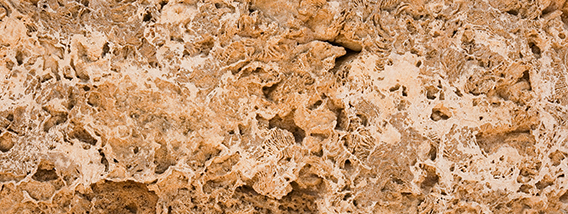

Explore the Unlikely Beauty of Coquina Sand
With a careful enough eye, beauty can be discovered in very unlikely or even incredibly mundane parts of everyday life. Despite its incredibly dull exterior, sand is a remarkably complex subfield of geology with its own hidden beauty.
Although most people picture sand as the foreground of a lovely seascape or part of a mighty sand dune, a whole new complexity can be explored when sand is examined under a microscope. Sand collected from beaches or deserts from all around the world can vary in texture, color, composition, and many other factors. The iconic sand of Florida is widely composed of a variety known as Coquina which is Spanish for “little shell”. The beaches found all along the eastern coast of the state were formed over the course of millions of years and composed of millions of shells.
Flagler Beach
One of the lesser-known coquina beaches and be found in Flagler Beach. Here you will find unspoiled views of the Atlantic Ocean as far as you can see. With a full six miles of beautiful sand, it is the perfect place to take a relaxing hike at the end of the day as you watch the warm sun sink over the horizon. If you’re interested in exploring more than just the beach there are plenty of parks in the area as well as a long old-fashioned wooden pier that stretches gently over the calm shallow waters. Attendees at CEC’s CME conferences in Palm Coast, Florida can walk along the beach and see the phenomenon of the coquina sand for themselves.
 Shallow coastal waters are primarily inhabited by mollusks, clams, and other shelled invertebrates. As these animals die their shells are pushed and pulled by the tides until they begin to collect in large beds along the seafloor. These beds of shells eventually begin to solidify together forming a type of limestone. Gradually the tide grinds this limestone into tiny particles that collect on the shore as sand. Although it can’t be seen with the naked eye if you were to take some sand from any of the number of beaches along the eastern coast of Florida you would notice the shells of many invertebrates.
Shallow coastal waters are primarily inhabited by mollusks, clams, and other shelled invertebrates. As these animals die their shells are pushed and pulled by the tides until they begin to collect in large beds along the seafloor. These beds of shells eventually begin to solidify together forming a type of limestone. Gradually the tide grinds this limestone into tiny particles that collect on the shore as sand. Although it can’t be seen with the naked eye if you were to take some sand from any of the number of beaches along the eastern coast of Florida you would notice the shells of many invertebrates.
The beds of limestone are not always ground entirely away by the tides. During the last major ice age, the waters around Florida drastically receded leaving some of these beds of shells to solidify on dryland. The large blocks of limestone were protected from the erosion of the waves. Not only is Coquina an interesting geological feature of Florida the rock itself has served as a vital construction material during colonial times.
Castillo de San Marcos
The Spanish were the first Europeans to colonize the state of Florida and saw the area as a vital place to construct settlements. The close proximity to the British colonies meant that the Spanish were always under threat from possible expansion into their area. Although Florida is rich in natural resources one main drawback is the utter lack of solid rocks traditionally used for constructed fortified walls and buildings. The colonists had no other choice but to rely on the Coquina stone when they set about constructing the first fort in the state, Castillo de San Marcos in St. Augustine. The Spanish dug up the stone wherever they could find it, cut it to size, and mortared it together with a paste made from oyster shells. Slowly the fortress took shape and towered over the sea that helped create it. The last stone was placed in 1695 and many feared that the fragile Coquina limestone would not hold up as well as the traditionally built masonic forts of Europe.
The fort would be put to the test when the British laid siege to the city in 1702. To everyone’s surprise no matter how many volleys of cannonballs the British bombarded Castillo de San Marcos with the walls still stood. In fact, unlike her European and temperate counterparts, the Coquina stone’s porous property absorbed the cannonballs rather than bounce them off. Consequently, this absorption proved more valuable as harder stone walls tended to splinter when hit with cannonballs producing a deadly spray of shrapnel. No Coquina-built Spanish fort was ever successfully laid siege to and the humble “tiny shell” stone quickly became known as the stone that saved St. Augustine. The Castillo de San Marcos can still be explored today if you look close enough at the walls you can still spot the dents caused by four-hundred-year-old cannonballs and the millions of tiny little shells that protected the city.
Upcoming CME Conferences & Online Learning
Want to attend a live CME conference or complete an online course from the comfort of home?
At Continuing Education Company, we make your medical continuing education fun, engaging, and relevant. Explore our conference calendar to view upcoming dates and destinations as well as CME365™ online courses and live streaming options.
For a limited time, take advantage of our Special Offer: attend one of our live conferences in person and receive a FREE online 15 credit CME course from CME365™.